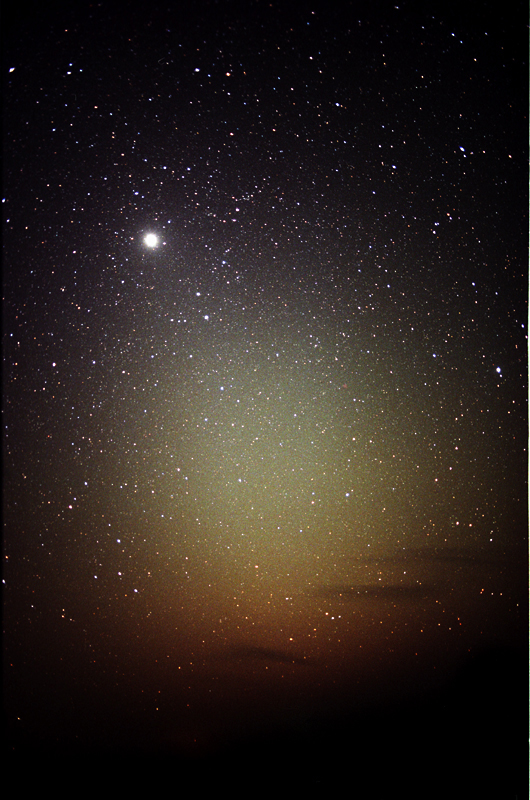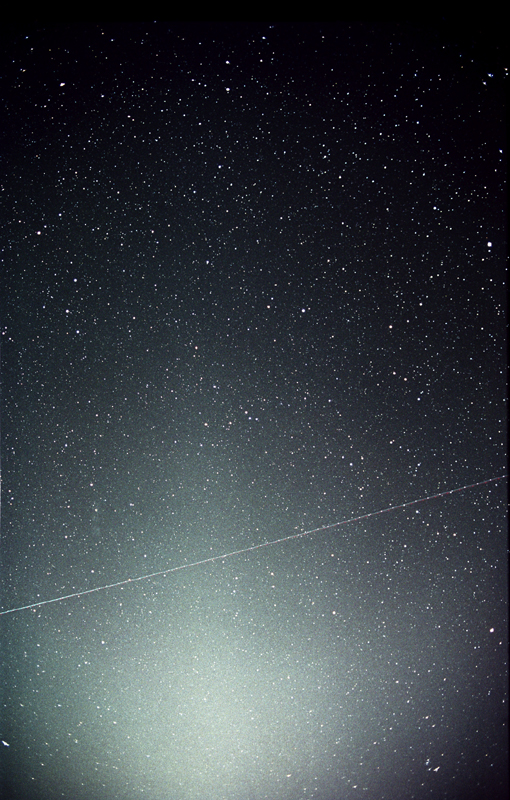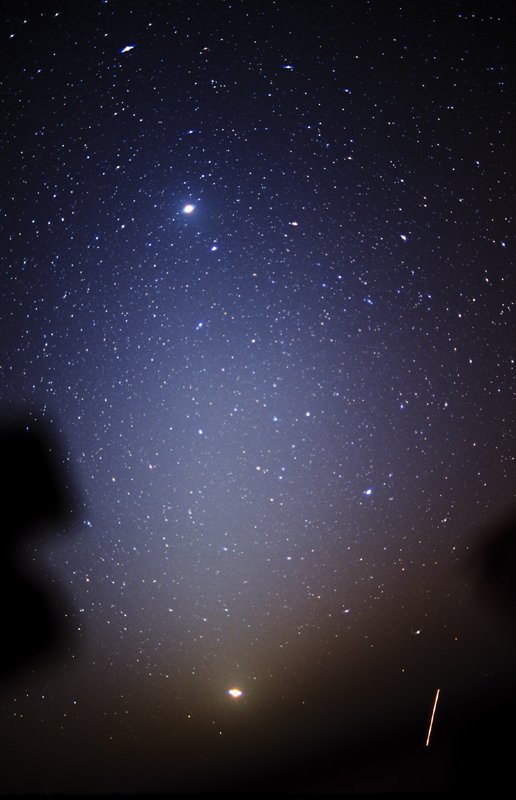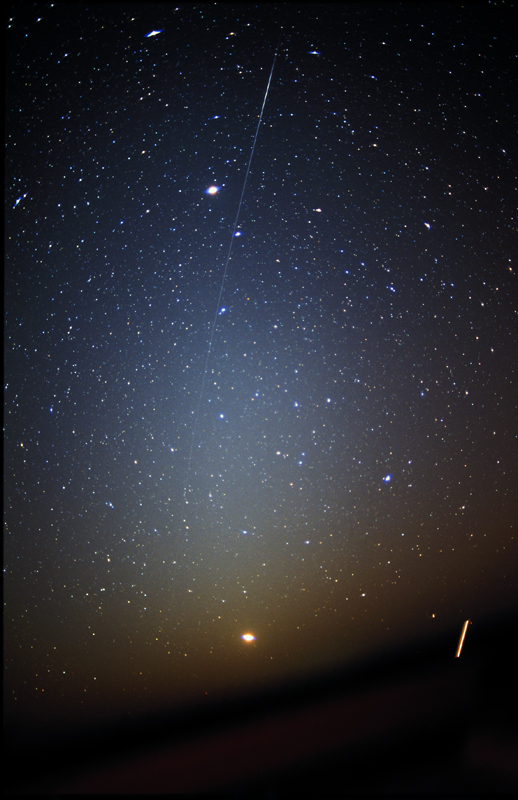
10 minutes exposure, Fuji Super HG V 400 film.
35mm Nikkormat lens set at f/4 .
From where I lived in Western Australia, the Zodiacal Light was a common occurance, both after sundown and before sunrise. Often from my dark sites, it would be visible across the entire sky, forming what is known as the zodiacal band, and opposite the sun, the Gegenshine was also frequently visible. People visiting from overseas were often surprised at how bright and obvious the zodiacal light actually was. As a local, I often found it to be a real nuisance. A natural form of light pollution!! Especially during early May when observing the eta aquarid meteor shower.

The very bright object is Jupiter, in the constellation Capricornus, while at the bottom left is the "Y" of Aquarius. The bright star at the centre right edge is Fomalhaut.

In this photograph the "Y" of Aquarius it towards the upper left, while Fomalhaut is towards the upper right. The bright star towards the lower right is beta ceti, sometimes known as Diphda. In the bottom left-hand corner is gamma pegasi.
In the image below, The bright object near the bottom is the 3-day old Moon. Venus and Jupiter at the bright objects towards the top, among the stars forming the tail of Leo. Regulus is just right of centre. The bright line is the reflection of the Moon from the roof of the observing area.

While I was taking a second image, the ISS drifted through the field of view. One thing I found interesting was the rapid change in the colour of the sky above the horizon. As is visible in the image, very close to the horizon, the sky has a distinct yellowish tinge due to looking through a greater amount of atmosphere. However, this colour rapidly fades to a deep blue only a few degrees above the horizon.
